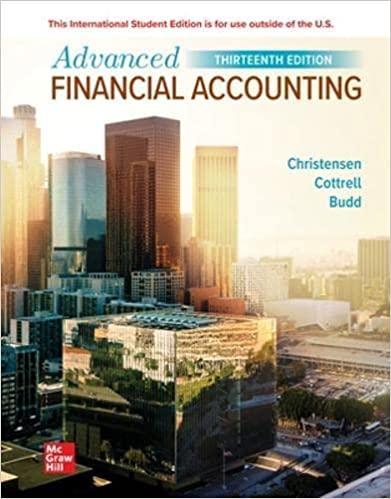Question
(1) France and Italy only trade with each other; (2) each country is only capable of producing 2 goods, Wine and Bread; (3) the production
(1) France and Italy only trade with each other; (2) each country is only capable of producing 2 goods, Wine and Bread; (3) the production of Bread is relatively capital intensive, and the production of Wine is relatively labor intensive, and (4) France is relatively abundant in capital, while Italy is relatively abundant in labor. All assumptions from our class about the Heckscher-Ohlin model hold, in particular the fact that both countries have identical homothetic preferences, constant returns to scale in production, the countries are the same size, etc...
For the sake of consistency, put BREAD on the X-axis of any PPF graphs you might be inclined to draw.
a. Compare the relative prices of Wine and Bread in each country under autarky. Be sure to thoroughly explain your answer, possibly using a graph(s) for a visual aid. (Answer should be at least one paragraph in length. Quality of your answer determines grade.)
b. Sketch excess demand/excess supply curves for Bread consistent with the scenario when the countries open for free trade. Be sure to carefully draw your graph and identify all relevant parts.
c. Describe what happens to factor payments in Italy with trade. Be sure to thoroughly explain your answer using what you have learned from the class. (Answer should be at least one paragraph in length. Quality of your answer determines grade.)
d. A new discovery improves the Bread making production. This change increases potential output and also makes Bread production more capital intensive than before. In words and possibly with pictures, describe the impact of this change in technology on the two economies. You should be sure to include a discussion on the changes in the prices of goods and production factors. (Answer should be at least one paragraph in length. Quality of your answer determines grade.)
Suppose the Olive Oil industry (good X) is characterized by Monopolistic Competition in both the Home and Foreign country. The different producers offer differentiated products based on the flavor of their oil. Otherwise, the olive oil producers are in all ways identical. They each face a linear demand curve of the type described in Lesson 8:
Pi=1nb+PXiXbfor any firm i. Fixed Costs are F=$10M, Marginal costs are constant C=$200 per barrel. b=.008. The size of the home market is 50M barrels, and foreign is 15M barrels. [Note: any fractions for the equilibrium number of firms (n) should be rounded down to the nearest integer when doing any further calculations.]
a. How many firms will produce in the home market in autarky? How much output for each firm? What is the price per barrel?
b. How many firms will produce in the foreign market in autarky? How much output for each firm? What is the price per barrel?
c. How many firms will produce in equilibrium when the countries open for trade? How much output for each firm? What is the price per barrel?
Consider the monopolistic competition model from lecture that is initially in long run equilibrium. Consumers suddenly become more sensitive to price differences between firms (the b-term increases).
a) Will the firm's demand curve become steeper or flatter? Does the intercept move up or down the y-axis?
b) Compared to the initial equilibrium, in the long run, what happens to the number of firms?
c) Compared to the initial equilibrium, in the long run, what happens to firm's profits?
d) Describe the transition period for this market from the initial to final equilibrium. Feel free to use a graph to describe.
e) Compared to the initial equilibrium, in the long run, what happens to the price level of the good?
Step by Step Solution
There are 3 Steps involved in it
Step: 1

Get Instant Access with AI-Powered Solutions
See step-by-step solutions with expert insights and AI powered tools for academic success
Step: 2

Step: 3

Ace Your Homework with AI
Get the answers you need in no time with our AI-driven, step-by-step assistance
Get Started


